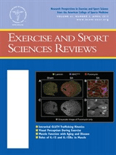
EXERCISE AND SPORT SCIENCES REVIEWS
Scope & Guideline
Elevating the standards of exercise and rehabilitation research.
Introduction
Aims and Scopes
- Exercise Physiology and Metabolism:
Research exploring the biochemical and physiological responses to exercise, including metabolism, energy expenditure, and adaptations in various populations. - Neuromuscular Function and Performance:
Investigations into the mechanisms underlying muscle function, strength training, and performance optimization, focusing on both healthy individuals and those with specific conditions. - Psychological and Cognitive Aspects of Exercise:
Studies examining the relationship between physical activity and mental health, cognition, and emotional well-being, emphasizing the psychological benefits of exercise. - Aging and Exercise Interventions:
Research addressing the effects of aging on physical performance and health, and how exercise can mitigate age-related declines in function and health outcomes. - Exercise as Therapy for Chronic Conditions:
Exploration of exercise interventions as therapeutic strategies for managing chronic diseases, including metabolic disorders, cardiovascular health, and musculoskeletal conditions. - Innovative Exercise Modalities and Technologies:
Investigations into new forms of exercise, training methodologies, and the use of technology in enhancing exercise adherence and effectiveness. - Public Health and Physical Activity Promotion:
Research focused on the societal implications of exercise, including strategies for promoting physical activity across different populations.
Trending and Emerging
- Integrative Approaches to Exercise and Health:
There is a growing interest in the interplay between exercise and various health factors, including mental health, metabolic health, and chronic disease management, indicating a holistic view of exercise as a multifaceted intervention. - Microbiome and Exercise Interaction:
Emerging research linking exercise with gut microbiota suggests that physical activity may influence microbial diversity and health, opening new avenues for understanding the relationship between exercise and overall well-being. - Sex Differences in Exercise Response:
An increasing focus on sex-based differences in exercise physiology and response highlights the importance of understanding how gender may influence training outcomes and health benefits. - Exercise and Neuroplasticity:
Research exploring the effects of exercise on brain health and neuroplasticity is on the rise, reflecting a deeper understanding of how physical activity can enhance cognitive function and potentially mitigate neurodegenerative diseases. - Technology-Enhanced Exercise Interventions:
The integration of technology, such as wearable devices and apps, into exercise interventions is trending, as researchers explore their effectiveness in promoting physical activity adherence and outcomes. - Behavioral Science in Exercise Promotion:
There is an increasing emphasis on applying behavioral science principles to enhance exercise adherence and motivation, indicating a shift towards understanding the psychological factors that influence physical activity.
Declining or Waning
- Traditional Strength Training Techniques:
Research focusing on conventional strength training methods has seen a decline, possibly due to a growing interest in more innovative or functional training approaches that emphasize adaptability and sport-specific performance. - Basic Biomechanics Without Clinical Application:
Studies centered solely on basic biomechanical principles without direct clinical application are appearing less frequently, as the journal shifts towards research that connects biomechanics with practical outcomes in health and performance. - Generalized Exercise Recommendations Without Individualization:
There is a noticeable decrease in publications offering broad, generalized exercise recommendations, as the focus has shifted towards personalized and tailored approaches to exercise prescription. - Age-Specific Exercise Protocols in Isolation:
The exploration of age-specific exercise protocols in isolation has waned, likely due to a broader interest in integrative approaches that consider multiple factors influencing exercise response across varied populations.
Similar Journals
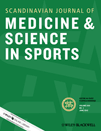
SCANDINAVIAN JOURNAL OF MEDICINE & SCIENCE IN SPORTS
Transforming Sports Health with Innovative Research.SCANDINAVIAN JOURNAL OF MEDICINE & SCIENCE IN SPORTS, published by Wiley, stands at the forefront of research in the fields of orthopedics, sports medicine, and physical therapy. Established in 1991, this prestigious journal has built a strong reputation, reflected in its Q1 ranking across multiple categories including Orthopedics and Sports Medicine, and Physical Therapy and Rehabilitation, as of 2023. With a discerning focus on innovative research and practical applications, the journal publishes high-quality studies that advance the understanding of sports performance and rehabilitation strategies. Although it does not offer open access, it remains accessible through various institutional subscriptions, ensuring that both practitioners and academics can benefit from its findings. The journal's commitment to excellence is further evidenced by its impressive Scopus rankings, placing it in the top 94th percentile within its respective fields. As the athletic landscape continues to evolve, SCANDINAVIAN JOURNAL OF MEDICINE & SCIENCE IN SPORTS serves as an essential resource for researchers, clinicians, and students dedicated to improving health outcomes in sports and exercise.
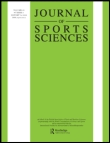
JOURNAL OF SPORTS SCIENCES
Elevating the standards of sports science and practice.The JOURNAL OF SPORTS SCIENCES, published by TAYLOR & FRANCIS LTD, serves as a premier platform for disseminating influential research in the fields of sports science, orthopedics, and rehabilitation. With an impressive ISSN of 0264-0414 and E-ISSN of 1466-447X, this UK-based journal has established a significant presence in the academic community since its inception in 1983, continuing to thrive through 2024. It holds a coveted Q1 ranking across multiple disciplines including Orthopedics and Sports Medicine, and ranks 30th in Physical Therapy, showcasing its relevance and impact in the health professions sector. Although the journal does not currently offer open access, it remains a critical resource for researchers, professionals, and students dedicated to advancing knowledge and practice in sports sciences. The journal's commitment to publishing high-quality, peer-reviewed articles ensures that it remains at the forefront of innovation and discovery in sports-related health and rehabilitation.
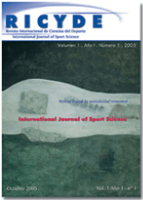
RICYDE-Revista Internacional de Ciencias del Deporte
Exploring Innovations in Sports Rehabilitation and TherapyRICYDE-Revista Internacional de Ciencias del Deporte is a leading scholarly journal dedicated to the field of sports science, physical therapy, and rehabilitation, published by Ramon Canto Alcaraz from Spain. Since its inception in 2005, this Open Access journal has been at the forefront of disseminating impactful research, promoting advancements in therapeutic practices and sports rehabilitation strategies. With an impact factor reflecting its quality and relevance in the academic community, RICYDE holds notable rankings within the Scopus database, particularly achieving a Q3 category in Physical Therapy, Sports Therapy and Rehabilitation for 2023, and a Q4 in Sports Science. Its multidisciplinary focus and commitment to accessible research make it an invaluable resource for researchers, professionals, and students seeking to enhance their understanding and application of sports sciences. The journal’s extensive archive is continually updated, making it a vital tool for those engaged in health professions and allied fields.
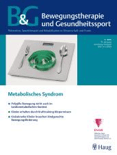
Bewegungstherapie und Gesundheitssport
Championing the Future of Rehabilitation and Health PromotionBewegungstherapie und Gesundheitssport, published by GEORG THIEME VERLAG KG, is a distinguished journal primarily focused on the fields of movement therapy, health sports, and rehabilitation sciences. With a commitment to fostering knowledge dissemination and innovation in promoting physical health and well-being, this journal serves as a vital resource for researchers, health professionals, and students interested in the intersection of exercise and therapy. While currently not offering an open access model, it maintains a robust impact on academic discourse, supported by rigorous peer-reviewed research that spans diverse methodologies and interdisciplinary approaches. The journal invites high-quality contributions that explore the efficacy of movement therapies, the impact of physical activity on health disorders, and emerging trends in health promotion strategies, thereby enhancing the understanding of physical well-being's role in society.

MEDICINA DELLO SPORT
Exploring Innovative Solutions for Athletic Well-beingMEDICINA DELLO SPORT is a distinguished journal published by EDIZIONI MINERVA MEDICA, dedicated to advancing knowledge in orthopedics, sports medicine, and physical therapy. With its ISSN 0025-7826 and E-ISSN 1827-1863, this journal has been a pivotal platform for scholarly research since its inception in 1965, enhancing the understanding of various aspects of sports health and rehabilitation. Although it currently does not offer open access, it maintains a reputable stance in academic publishing, ranking in Q3 for both Orthopedics and Sports Medicine as well as Physical Therapy, Sports Therapy, and Rehabilitation, according to the latest metrics. With its inclusion in Scopus and a strong presence in important health professions, MEDICINA DELLO SPORT is crucial for researchers, professionals, and students aiming to explore and contribute to the evolving field of sports medicine and therapies. It is published from its headquarters located at CORSO BRAMANTE 83-85 INT JOURNALS DEPT., 10126 TURIN, ITALY, ensuring a European perspective in global health discussions.

Acta Kinesiologica
Pioneering excellence in kinesiology research.Acta Kinesiologica is a distinguished journal dedicated to advancing the fields of kinesiology and health sciences. Published by the DRUSTVO PEDAGOGA TJELESNE & ZDRAVSTVENE KULTURE, this journal serves as a vital platform for researchers, professionals, and students to disseminate and engage with innovative findings in physical education, exercise science, and health promotion. With the ISSN 1840-2976 and E-ISSN 1840-3700, Acta Kinesiologica highlights contemporary research methodologies and interdisciplinary approaches that aim to enhance human movement and well-being. Although currently not an open-access journal, it is recognized for its commitment to quality and scholarly excellence. Researchers from around the globe benefit from its rigorous peer-review process, which ensures that only the most relevant and impactful studies are published. As the journal continues to evolve, it remains an essential resource for those seeking to expand their knowledge and contribute meaningfully to the scientific community in kinesiology and related disciplines.
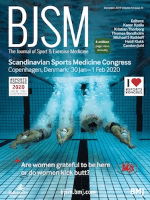
BRITISH JOURNAL OF SPORTS MEDICINE
Advancing Sports Health Through Cutting-Edge ResearchBritish Journal of Sports Medicine (BJSM) is a premier academic journal that stands at the nexus of sports science and medicine, dedicated to advancing the understanding and practice of sports health. Published by the BMJ Publishing Group, this esteemed journal has been delivering high-quality, peer-reviewed research since its inception in 1964 and continues to be a crucial resource for professionals and researchers in the fields of orthopedics, sports medicine, and rehabilitation. With an impressive impact factor and consistently ranked in the Q1 category across multiple relevant disciplines according to the latest metrics, BJSM is a vital platform that disseminates essential findings that shape clinical practice and influence policy. Located in the heart of London, UK, it provides unrestricted access to groundbreaking research, critiques, and reviews that address the latest challenges in sports health. Whether you are a seasoned researcher, a budding sports medicine professional, or a dedicated student, the British Journal of Sports Medicine is your go-to source for the latest advances and insights in the ever-evolving landscape of sports health and performance.

BIOLOGY OF SPORT
Unlocking the Secrets of Sports BiologyBIOLOGY OF SPORT is a leading peer-reviewed journal published by TERMEDIA PUBLISHING HOUSE LTD, renowned for its significant contributions to the fields of sports science, orthopedics, and rehabilitation. Since its establishment in 1984, this Open Access journal has facilitated the dissemination of important research findings and clinical practices that advance our understanding of athletic performance and physical health. With an impressive Q1 ranking in key categories such as Orthopedics and Sports Medicine, Physical Therapy, and Physiology, BIOLOGY OF SPORT is recognized for its rigorous standards and high-impact contributions, boasting a 95th percentile ranking in several Scopus categories. The journal is committed to fostering interdisciplinary knowledge that bridges fundamental biology with practical sports applications, making it an invaluable resource for researchers, healthcare professionals, and students dedicated to improving health and performance in sports contexts. For more information, you can explore their offerings and access articles at their Poland-based headquarters: KLEEBERGA 2, POZNAN 61-615.

Journal of Exercise Rehabilitation
Exploring New Frontiers in Physical and Sports TherapyThe Journal of Exercise Rehabilitation is a leading academic publication dedicated to advancing the field of physical therapy, sports therapy, and rehabilitation. Published by the Korean Society of Exercise Rehabilitation, this open-access journal, available since 2013, facilitates the dissemination of high-quality research and innovative practices in exercise rehabilitation. With an impressive impact factor and an H-index reflecting its academic influence, the journal is ranked in the Q2 category for Physical Therapy and Sports Therapy and Rehabilitation, and Q3 for Orthopedics and Sports Medicine as of 2023. Operating from South Korea, it serves as a vital platform for researchers, practitioners, and students alike, fostering collaboration and the sharing of knowledge across borders. By including studies that span from 2017 to 2024, it not only highlights significant advances in the field but also encourages ongoing exploration and discussion. Engage with the Journal of Exercise Rehabilitation to contribute to this dynamic and evolving discourse in rehabilitation science.

Journal of Exercise Science & Fitness
Unlocking the potential of movement and health.Journal of Exercise Science & Fitness is a premier Open Access journal published by Elsevier Singapore Pte Ltd, dedicated to advancing the field of exercise science through rigorous research and comprehensive reviews. Since its inception in 2005, the journal has made significant contributions to various domains including Pharmaceutical Science, Physical Therapy, and Sports Science, achieving a distinguished Q1 ranking in its respective categories as of 2023. With a commitment to disseminating knowledge without barriers, it has embraced an Open Access model since 2009, ensuring that cutting-edge findings are accessible to all researchers, practitioners, and students worldwide. Its high visibility is reflected in its Scopus rankings, placing it among the top-tier journals in the health professions and public health sectors. This journal serves as a critical platform for the latest developments in exercise science, promoting evidence-based practices that can enhance health and performance, making it an invaluable resource for those at the forefront of this dynamic field.